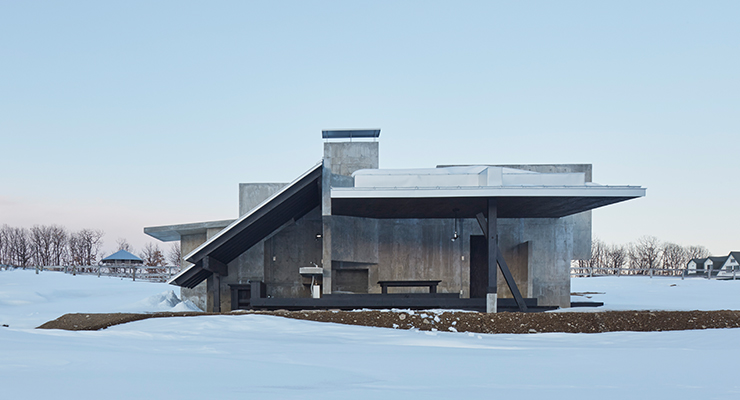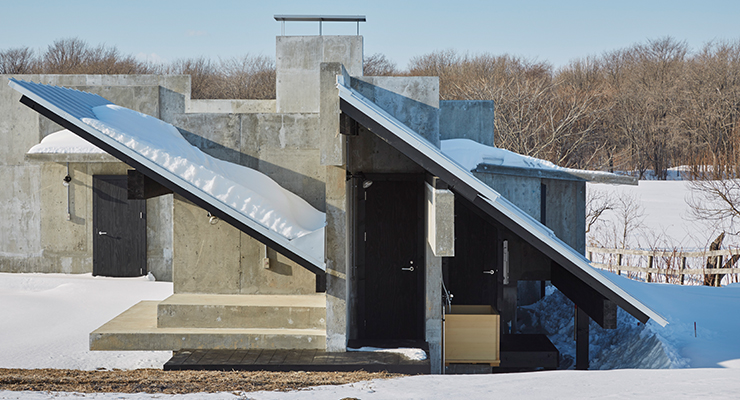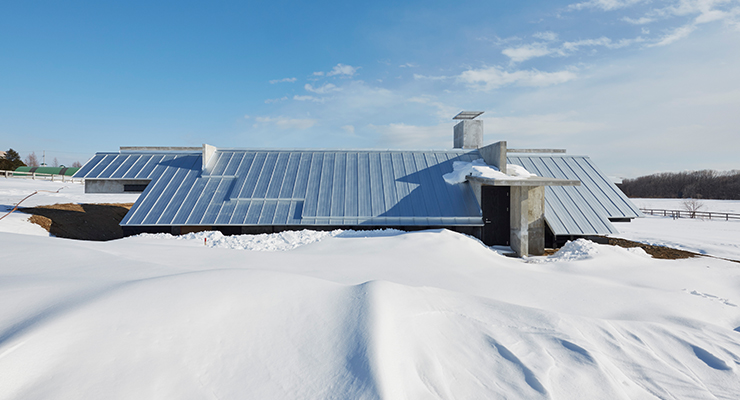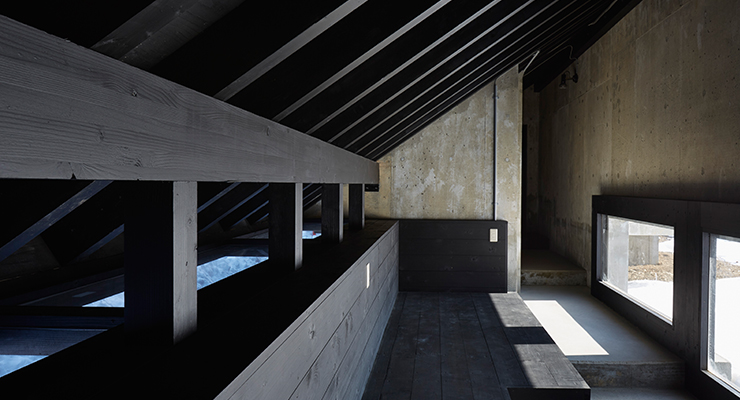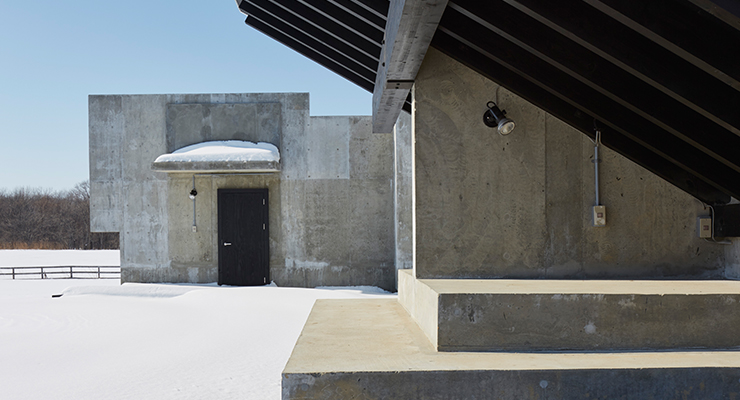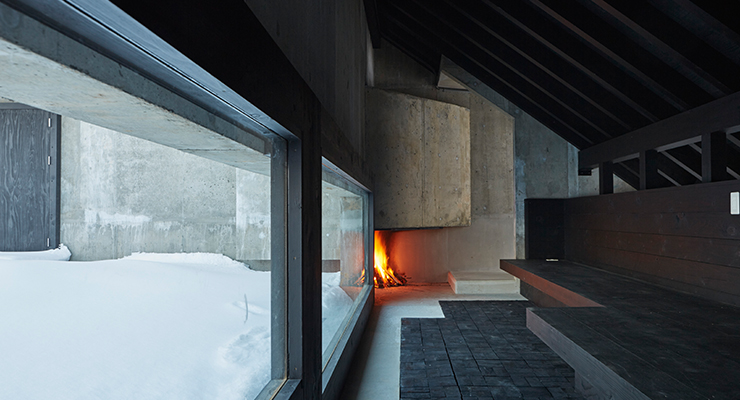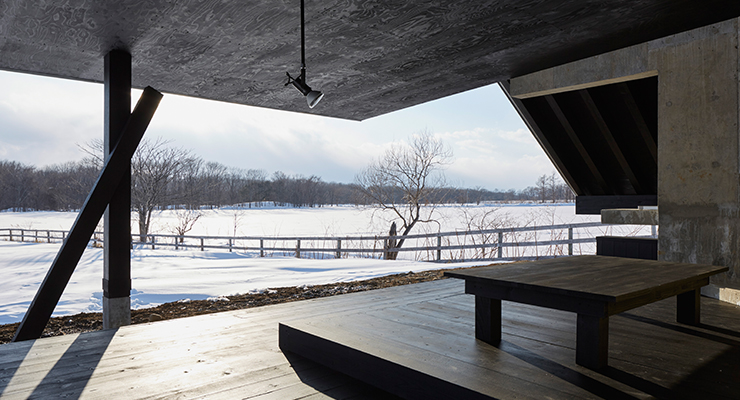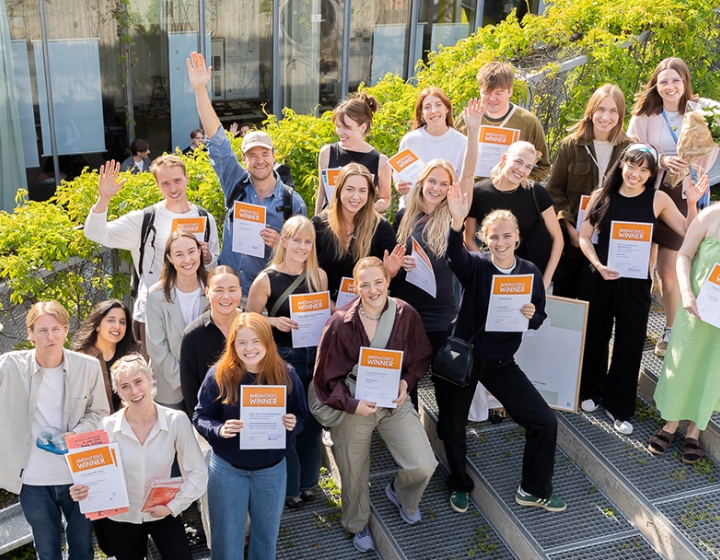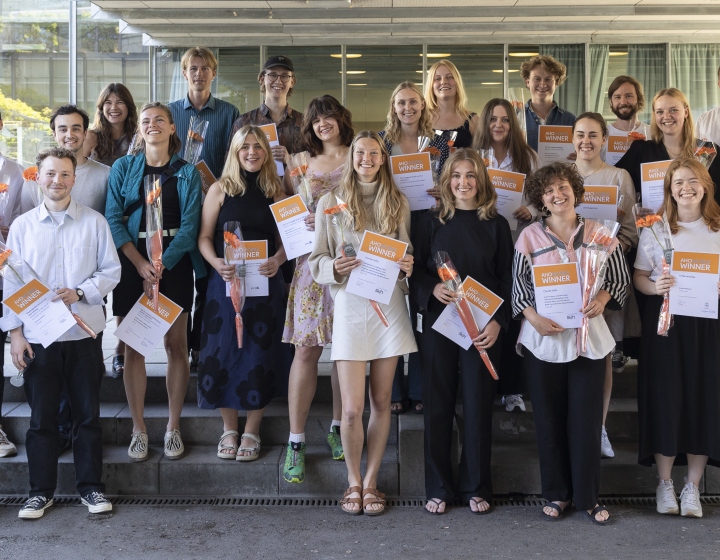AHO's award winning Inverted House has opened in Japan
Inverted House was be inaugurated at the Royal Norwegian Embassy in Tokyo on June 9th. A 108 paged catalogue was also be presented at the event.
In April of 2015, The Oslo School of Architecture and Design (AHO) was awarded the first prize in an international architectural competition hosted by the LIXIL JS Foundation. Situated on a site in the Memu Meadows of Hokkaido’s Taiki-cho in northern Japan, the competition seeks sustainable architectural solutions from nominative universities around the world. The theme of the competition in 2015 was a “House for Enjoying the Harsh Cold”.
Our approach was a rethinking of architecture as it relates to its relationship to nature. Traditionally, architecture has created a strong division between inside and outside, keeping the cold at bay while preserving heat within. The Inverted House seeks to challenge this idea and to bring the ‘harshness’ of the world into the house itself. We see the house as an instrument that changes the feeling of the world for its inhabitants. By minimizing heated interior spaces and creating a series of sheltered but open exterior spaces, the building reads the legacy of traditional Japanese Sukiya-zukuri in the light of Scandinavian frugality, while frontlining what closeness to nature might feel like, at its extreme.
We imagined Inverted House as a delicate instrumentation of many pieces, rather then one dominating concept. Each wall, floor, roof, pillar, and step, has been carefully considered in proportion and relation to the building as a whole and to the world in which it is built.
During the summer of 2015, the house was designed in detail by the students from the Oslo School of Architecture and Design, supervised bya architects from Kengo Kuma and Associates, Takumi Saikawa and Katsuhito Komatsu. This winter, the Inverted house was built in Taiki, Hokkaido. Now the house for enjoying the harsh cold is finally constructed, awaiting its new life on the open fields of Memu Meadows.
Our approach was a rethinking of architecture as it relates to its relationship to nature. Traditionally, architecture has created a strong division between inside and outside, keeping the cold at bay while preserving heat within. The Inverted House seeks to challenge this idea and to bring the ‘harshness’ of the world into the house itself. We see the house as an instrument that changes the feeling of the world for its inhabitants. By minimizing heated interior spaces and creating a series of sheltered but open exterior spaces, the building reads the legacy of traditional Japanese Sukiya-zukuri in the light of Scandinavian frugality, while frontlining what closeness to nature might feel like, at its extreme.
We imagined Inverted House as a delicate instrumentation of many pieces, rather then one dominating concept. Each wall, floor, roof, pillar, and step, has been carefully considered in proportion and relation to the building as a whole and to the world in which it is built.
During the summer of 2015, the house was designed in detail by the students from the Oslo School of Architecture and Design, supervised bya architects from Kengo Kuma and Associates, Takumi Saikawa and Katsuhito Komatsu. This winter, the Inverted house was built in Taiki, Hokkaido. Now the house for enjoying the harsh cold is finally constructed, awaiting its new life on the open fields of Memu Meadows.
Inverted House
Design Team:
The Oslo School of Architecture and Design
Laura Cristea, Mari Nysveen Hellum, Stefan Hurrell, Niklas Lenander, Prof. Neven Mikac Fuchs, Prof. Thomas McQuillan, Prof. Raphael Zuber
Architect:
Kengo Kuma and Associates
Structural Engineer:
Oak Structural Design Office
General Constructor:
Takahashi
Construction Company Client:
LIXIL JS Foundation
Photographers:
Shinkenchiku-sha and Laurian Ghinitoiu
Design Team:
The Oslo School of Architecture and Design
Laura Cristea, Mari Nysveen Hellum, Stefan Hurrell, Niklas Lenander, Prof. Neven Mikac Fuchs, Prof. Thomas McQuillan, Prof. Raphael Zuber
Architect:
Kengo Kuma and Associates
Structural Engineer:
Oak Structural Design Office
General Constructor:
Takahashi
Construction Company Client:
LIXIL JS Foundation
Photographers:
Shinkenchiku-sha and Laurian Ghinitoiu


